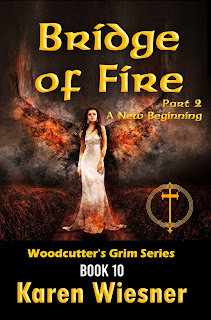Cory Doctorow's latest LOCUS column tackles the issue of scenarios that are allegedly impossible to imagine:
The UnimaginableThe specific scenario he discusses here is the end of capitalism. Lots of authors, he points out (including himself) have written about postcapitalist, sometimes post-scarcity societies. What's hard to imagine, he suggests, is the process of transition from the present to those hypothetical futures. Doctorow cites several examples of SF works that portray postcapitalist worlds, few of which go into detail about how those societies came about, Kim Stanley Robinson being one exception. Would the shift happen through violent revolution or gradual evolution?
Anyway, the job of science-fiction and fantasy writers is to imagine things, however wild or seemingly improbable, right? John Lennon's song "Imagine" claims "it's easy if you try" to conceive of such things as a peaceful Earth with "no possessions," no "greed or hunger," and "nothing to kill or die for." Imagining a utopia (not that I'd want to live in his, since I have doubts of the desirability of a world without countries or possessions, not to mention Lennon's anti-religious slant) may be easy, but visualizing how to get there involves a whole different order of difficulty.
Many, if not most, fictional futures, of course, aren't meant as literal predictions but as cautionary "if this goes on. . ." warnings or optimistic thought experiments in constructing societies better than our own. Few people would want to live in Orwell's NINETEEN EIGHTY-FOUR or Atwood's THE HANDMAID'S TALE. In the former, the rewriting or obliteration of history as a core policy of the despotic regime deliberately leaves the question of how Big Brother rose to power unanswerable. THE HANDMAID'S TALE (novel) offers a few glimpses of the transition but no detailed account of how we might get from here to there, while the TV series expands on these hints in extended flashbacks but still leaves many questions unanswered.
Although Edward Bellamy claimed his 1888 utopian novel LOOKING BACKWARD: 2000-1887 wasn't intended as a literal plan for political action, a movement to implement his ideas sprang up, in the form of "Nationalist Clubs" active in American politics well into the 1890s. In time Bellamy himself did get involved in this movement, which achieved some practical results before dying out. As attractive as some aspects of Bellamy's vision seem to me, I don't expect to see it become reality, although a few elements exist already—for instance, the cashless society. On the whole, though, over twenty years have passed since 2000, and we're not there yet. Bellamy's faith in the capacity of social structures to change human nature within a generation or two (abolishing greed, violence, etc.) seems naive today. I don't expect a world government such as LOOKING BACKWARD and many near-future SF novels take for granted. However, I wouldn't be surprised if a worldwide confederation similar to the EU eventually developed, but probably not in my lifetime.
One thing I especially like about S. M. Stirling's long-running Emberverse series, beginning with DIES THE FIRE, is that it depicts not only the violent collapse of civilization as we know it, along with the immediate post-apocalyptic scenario, but also the transitional phase experienced by the survivors and their rebuilding of a new society. The series follows the changed world over the course of two generations. We witness how the new world develops into neither a dystopic hellscape, an ideal utopia, nor a duplicate of the old order, but something simply different, better than the present in some ways and worse in others.
Margaret L. Carter
Carter's Crypt





































